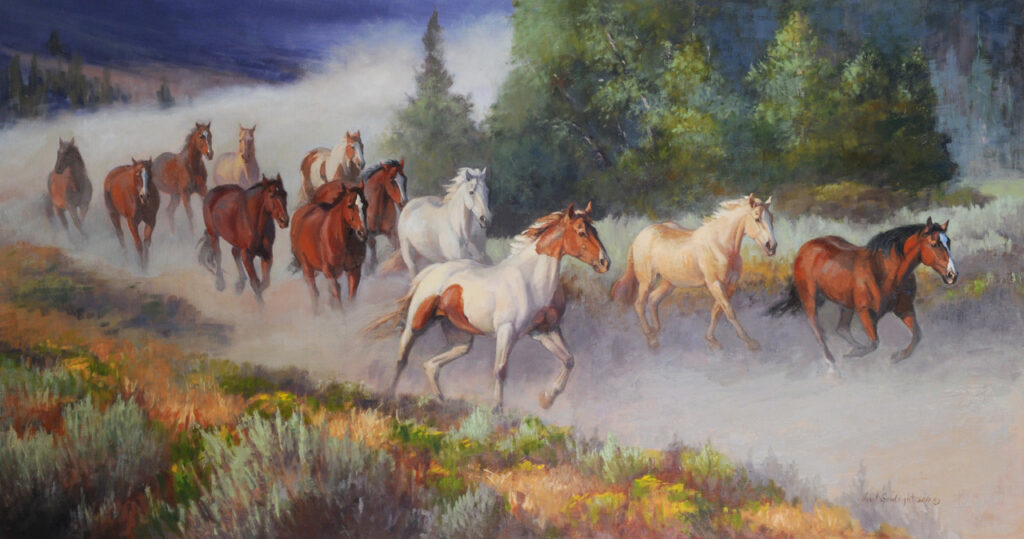
Alaska. The last frontier of the Old West. And its iconic sled dogs are the latest chapter, and passion project, of Western artist Veryl Goodnight. “I’m so excited about this,” she enthuses from her home outside Mancos, Colorado. “This sled dog story is so untold!”
Best known as an award-winning sculptor, Goodnight has long used her talent with paint and bronze to tell the stories of the often-overlooked but crucial roles played by both animals and women in the frontier West. Her monumental sculpture Back From the Brink, which portrays Mary Ann Goodnight bottle-feeding a buffalo calf as another one stands nearby, is a classic example. Goodnight and her famed husband, Charles Goodnight, rescued the calves in Texas’ Palo Duro Canyon in the late 1870s, during the slaughter that nearly drove the great herds to extinction. “Charles and Mary Ann Goodnight saved an entire subspecies of buffalo,” says the distant relative of the frontier legends. The descendants of those baby bison live today in Yellowstone National Park, while the vast majority remain in Caprock Canyons State Park & Trailway in Palo Duro Canyon.
That sculpture is a perfect example of Goodnight’s unwavering belief in the crucial connection between the artist and her subject. She and her husband, Roger, actually raised an orphan buffalo calf while she did the sculpture at their then-home and studio in Santa Fe. (The story is captured in R.D. Rosen’s book, A Buffalo in the House.) “The essence of my work is that connection,” Goodnight says. “Every living thing has moods, many kinds of light, many kinds of seasons. More than seeing it, you feel it. And that comes through in art.”
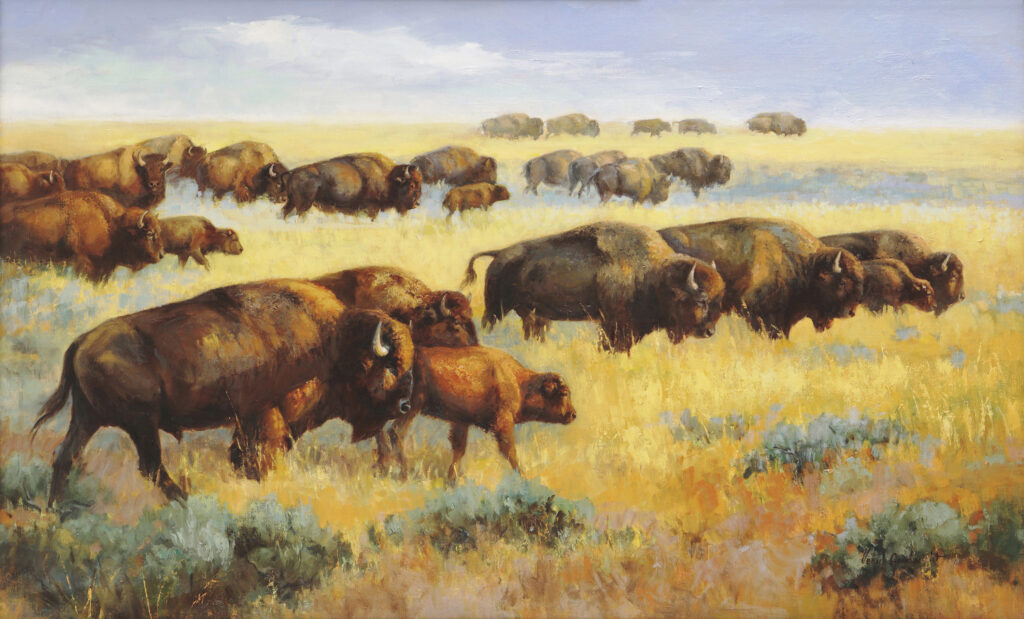
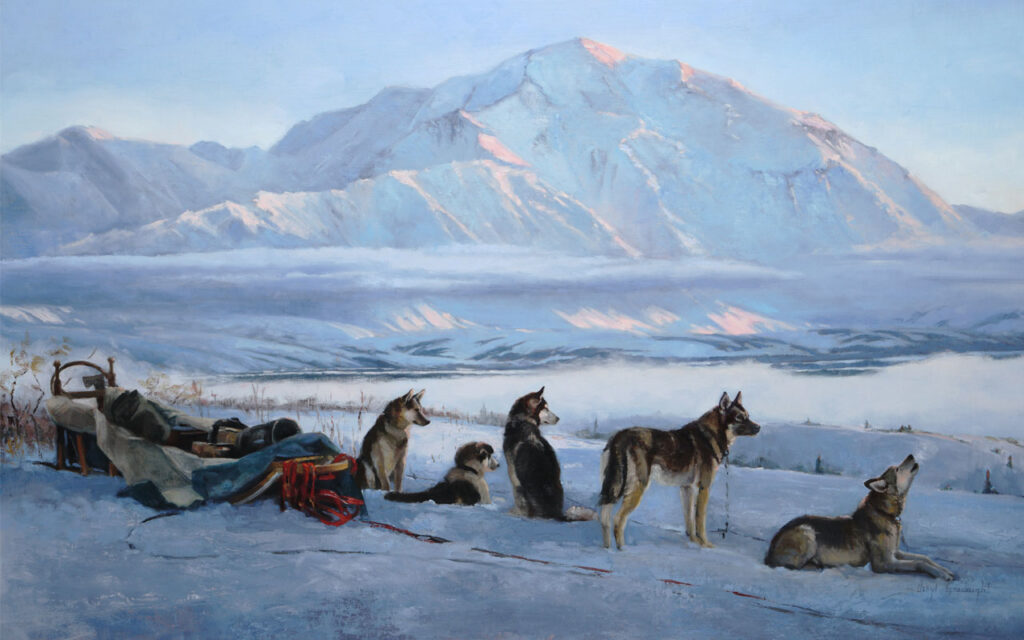
What she wants you to feel through her art is the heart of her art, which she sums up on her website as “a voice for animals and the softer side of the American West.” Licensed for wildlife rehabilitation, Goodnight has raised and rescued all kinds of animals that have also served as intimate models for her art, including foxes, a blind elk, and a black bear cub. She also brought home a longhorn cow and even rode part of the famed Goodnight cattle trail for her very first monumental sculpture, Old Maude; completed in the early 1980s, it portrayed a longhorn cow and calf.
At least twenty monuments are among her more than 200 sculptures. The Day the Wall Came Down is best known, depicting five larger-than-life-size horses leaping over the rubble of the Berlin Wall, and displayed today both in Berlin and at the George H.W. Bush Presidential Library in College Station, Texas. “It came as a dream, the day after the Berlin Wall fell,” she says. “I was sculpting some small horse studies. And that night I was awakened by a dream of those horses jumping over sections of the cement.” Re-creating the graffiti of the wall rekindled her interest in painting, which she had begun in her native Colorado as soon as she was old enough to hold a brush. Wildlife art was her initial focus. “I started sculpting to educate myself about animal anatomy, so I would be a better painter.”
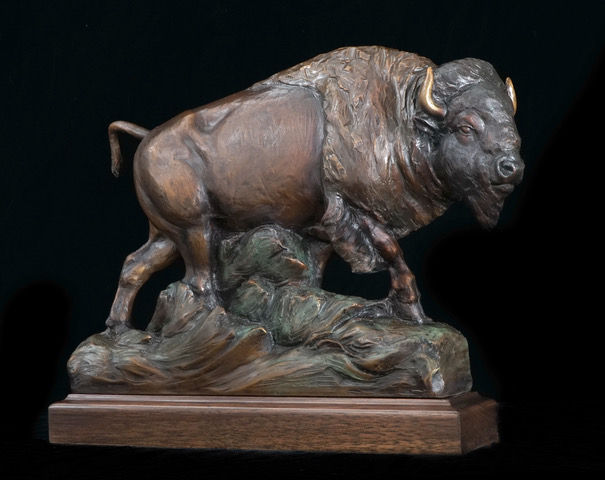
But her very first 8-inch bronze—of a bighorn sheep—was a huge hit. The local Eddie Bauer store bought out and sold the entire edition of 10. And Goodnight was on her way. “How encouraging is that for someone in their 20s!” she says.
Her many works include a well known series of sculptures of Western women, which Goodnight credits for her 2016 induction into the Cowgirl Hall of Fame. “My career has been broken into chapters…journeys,” she explains. While she hasn’t put down her clay, she’s primarily focused on painting since moving back to Colorado in 2005. In the inspiring surroundings of her beautiful mountain home, she says she sees paintings more than she sees sculptures. “The country I live in is absolutely spectacular.”
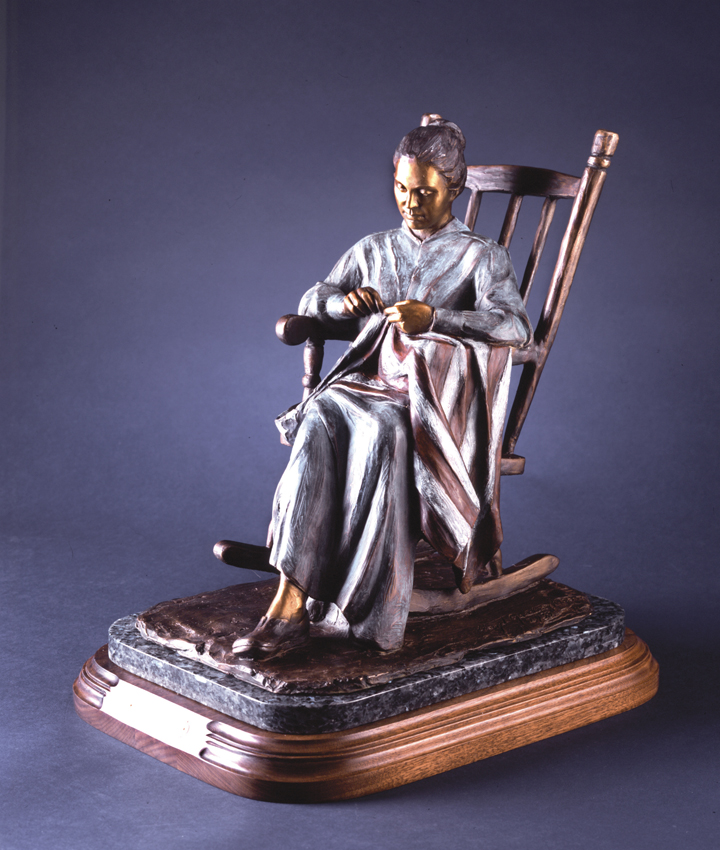
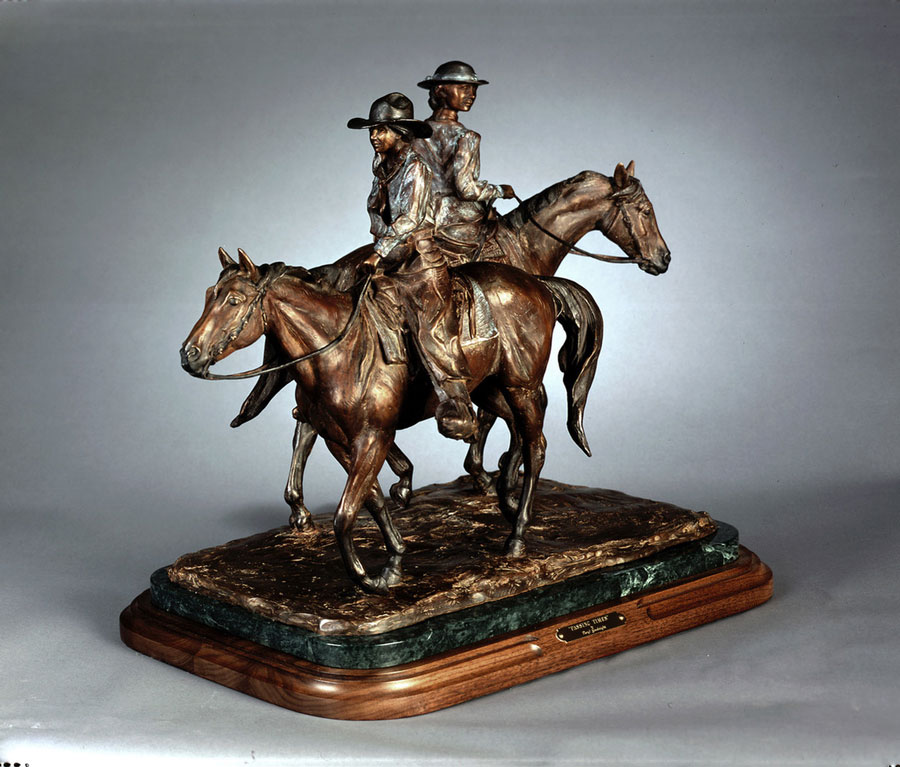
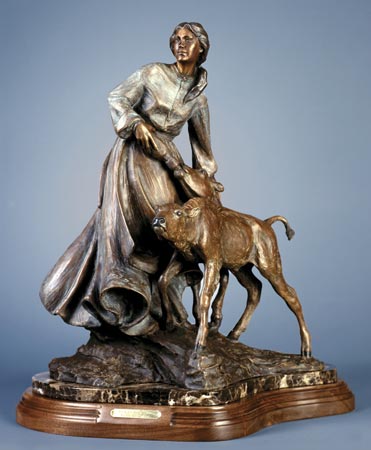
And her studio in Mancos is nothing if not animal-friendly. It’s her third studio that’s been situated in a barn. It’s where she houses her equine models. The studio space itself, she says, lets in plenty of natural light. And just outside the door are a kennel and play yard for her canine models. “The whole barn,” she says, “is my studio—the corrals and the land are, too.”
Her love of dogs has taken her far from the barn-studio in Colorado. After professional musher friends sparked her interest in sled dogs, she went dog sledding while in Alaska researching the history of the Denali Park Canine Patrol and painting, has owned and driven her own four-dog team, and contributed the cover and 16 paintings to The History of Sled Dogs in North America,” by Helen Hegener. She’s also planning a show of sled-dog paintings next year in Scottsdale, Arizona. “It’s an incredible story,” she says. “Sled dogs in the North were what horses were on the plains. That’s why it has to be shared.”
“I’m a voice for animals,” she concludes. “From riding on the Goodnight Trail to raising wildlife to running a dog team.” Her art, she says, is not about decorating someone’s home. “It’s about sharing positive stories about the wonderful land called the American West.”
—Mark Bedor
Veryl Goodnight is represented by Medicine Man Gallery (medicinemangallery,com) in Tucson, Arizona, Ann Korologos Gallery (korologosgallery.com) in Basalt, Colorado, and Broadmoor Galleries (broadmoorgalleries.com) in Colorado Springs, Colorado. Visit her online at verylgoodnight.com.